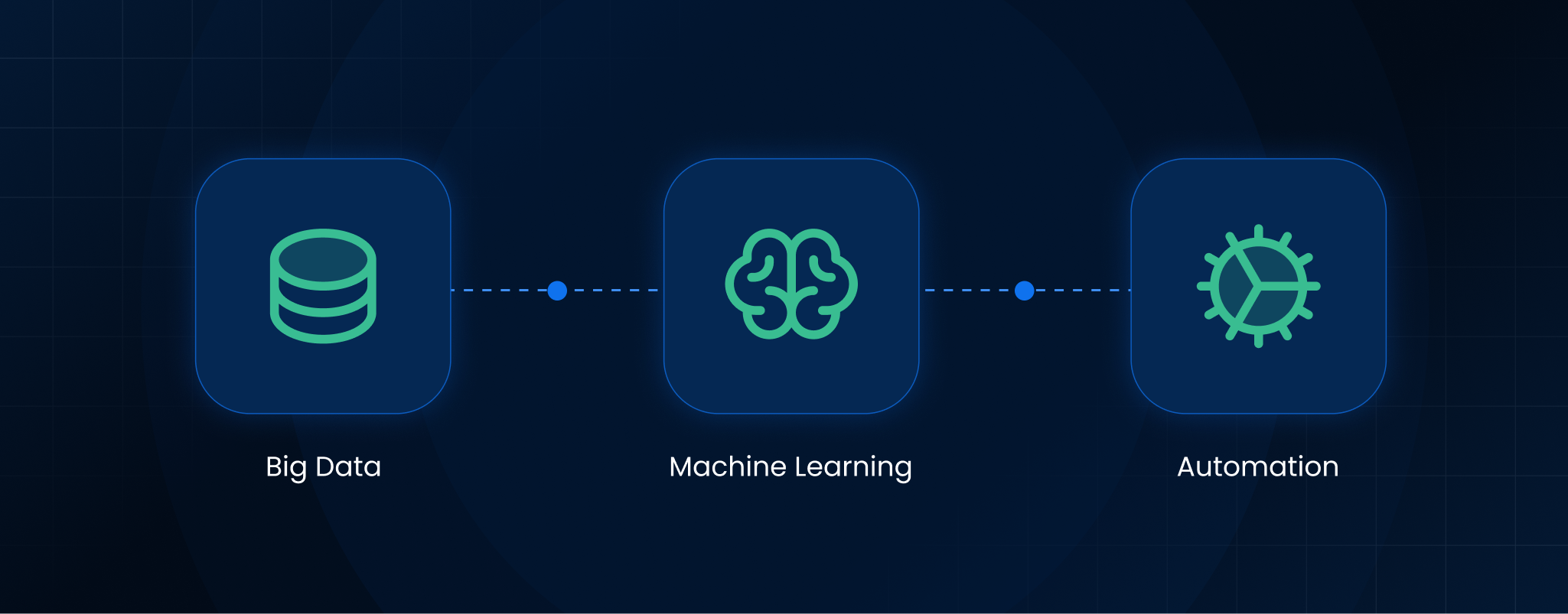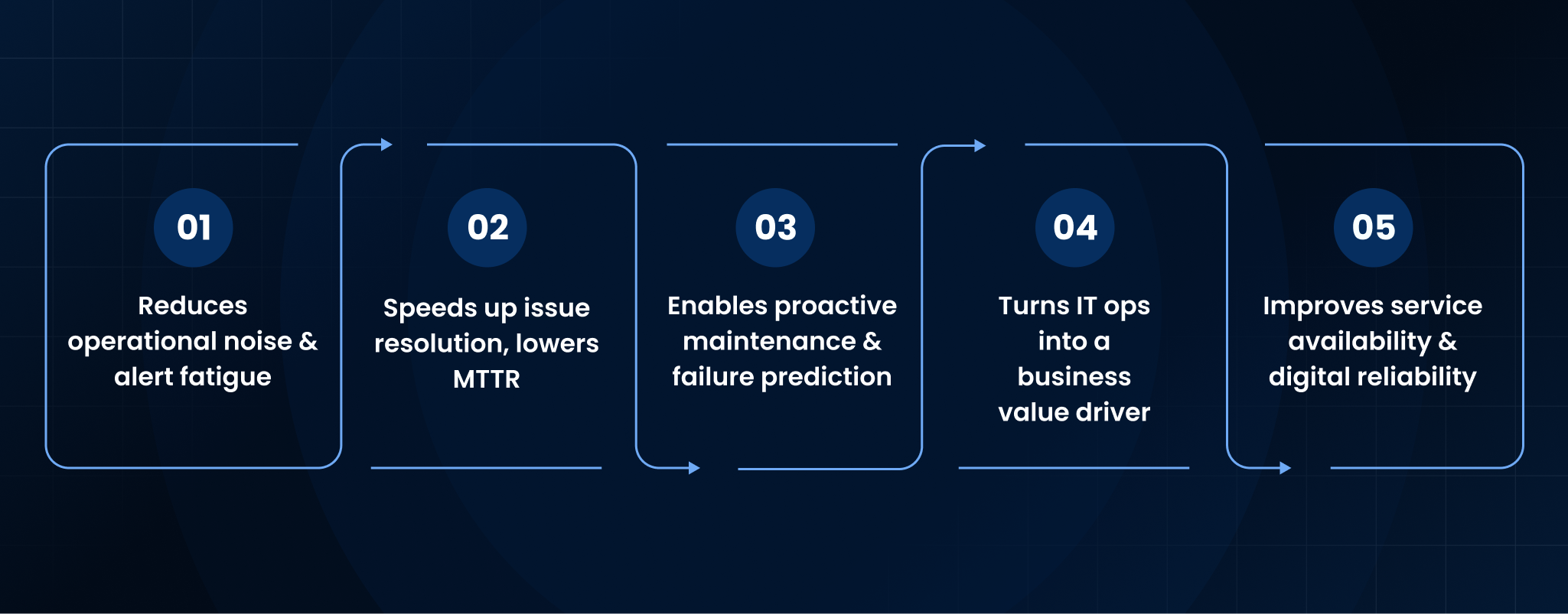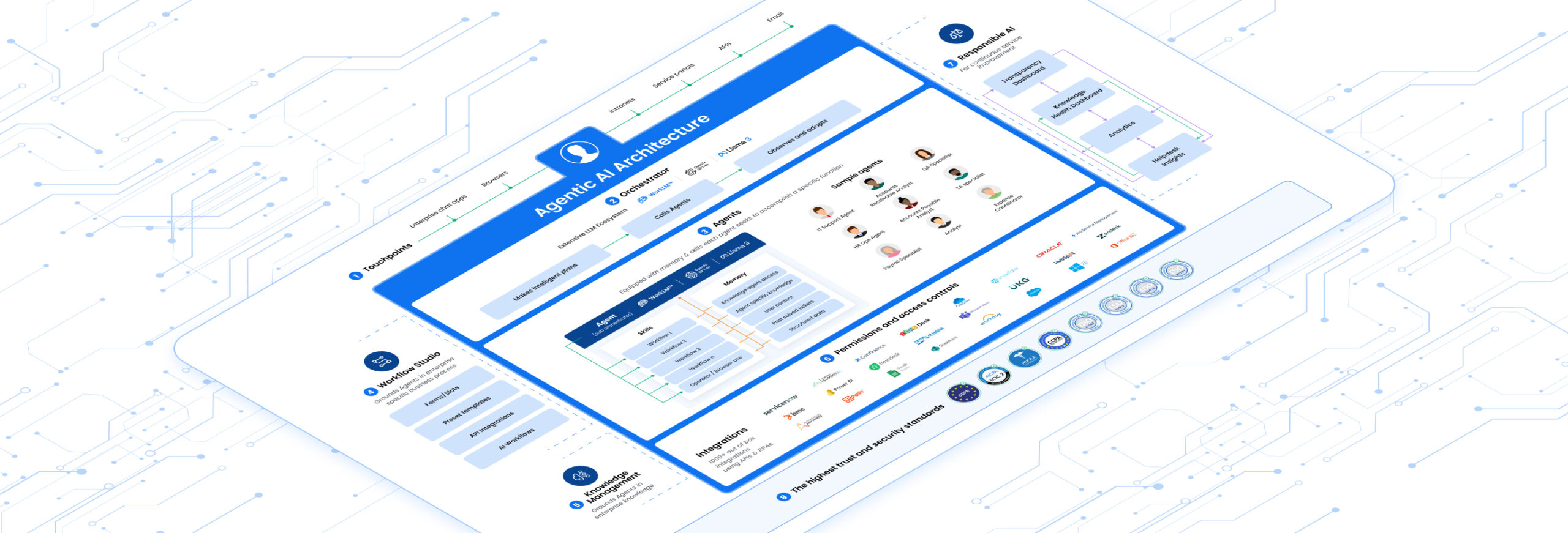Introduction
As a technology leader, you are constantly balancing two realities. On one hand, you have the daily flood of IT tickets and system alerts. On the other hand, you have the strategic mandate to innovate and drive business growth. For years, these two have been in conflict. Today, however, a powerful approach is emerging to turn operational chaos into strategic insight. This guide will explain what is AIOps and why it’s the key to unlocking your team’s potential in 2025 and beyond.
Imagine your IT environment as a bustling city. Traditionally, you’ve relied on thousands of individual security cameras (monitoring tools) to watch for trouble. When an alarm rings, your team rushes to the scene to figure out what happened. AIOps, or Artificial Intelligence for IT Operations, changes the game entirely. It’s like installing a central intelligence hub that watches all the cameras at once. This hub not only sees a problem but also understands its context, predicts its impact, and suggests the fastest solution.
What is AIOps and Why It’s a Game-Changer for Tech Leaders
At its core, AIOps is about applying modern artificial intelligence capabilities to the massive streams of data generated by your IT environment. It automates and enhances IT operations by using data analytics and machine learning to solve problems proactively. For leaders overseeing complex ticketing systems, understanding what is AIOps means understanding a fundamental shift from reactive firefighting to proactive, intelligent problem-solving.
Understanding AIOps: The Intersection of AI and IT Operations
Think of a seasoned detective arriving at a chaotic scene. While others see random clues, the detective instantly sees patterns, connects seemingly unrelated events, and identifies the root cause. This is exactly what an AIOps platform does for your IT operations. Instead of your team sifting through thousands of alerts from different systems (servers, networks, applications), AIOps ingests all that data. Subsequently, it uses powerful algorithms to find the real signal in the noise. It can correlate a spike in server CPU with a slowdown in your e-commerce checkout process, for instance. This process turns a flood of confusing data points into a single, actionable insight, which is a core value proposition of AIOps.
The Core of the System: What is AIOps Made Of?
To truly grasp what is AIOps, it helps to look under the hood at its fundamental building blocks. These components work together to create an intelligent, automated system that supports your IT teams, rather than overwhelming them. It’s a powerful combination that moves IT from a state of constant reaction to one of strategic control.
Core Components of AIOps: Machine Learning, Big Data, and Automation
First, Big Data serves as the foundation. An AIOps platform gathers a vast amount of information from every corner of your technology stack. This includes logs, performance metrics, and ticket data from your existing systems. It creates a single, unified source of truth.
Next, Machine Learning acts as the brain. This is where the magic happens. Sophisticated algorithms analyze the collected data to learn what “normal” looks like for your systems. As a result, they can detect anomalies, group related alerts together, and pinpoint the root cause of an issue with incredible speed and accuracy.
Finally, Automation provides the hands. Once an issue is identified, AIOps can trigger automated workflows to resolve it. This could be as simple as restarting a service or as complex as reallocating cloud resources. This automation frees up your highly skilled engineers from repetitive tasks, allowing them to focus on high-value initiatives.

The Strategic Impact: What is AIOps Going to Do for My Business?
As a leader, your main question isn’t just “What is it?” but “What’s in it for us?” The business case for AIOps is compelling, especially as we head into 2025 where digital experiences define brand loyalty. Adopting AIOps translates directly into measurable improvements in efficiency, cost savings, and a better experience for both your employees and customers.
Key Benefits of Implementing AIOps in IT Operations
The most immediate benefit is a dramatic reduction in operational noise. Your teams can finally escape “alert fatigue” and focus on what truly matters. This leads to faster resolution times because the system has already done the diagnostic heavy lifting. Consequently, your Mean Time to Resolution (MTTR) plummets.
Furthermore, AIOps enables a critical shift to proactive maintenance. By identifying patterns that precede an outage, the platform can predict failures before they impact users. This preventative capability is a game-changer. It transforms your IT operations from a cost center focused on fixing broken things into a value driver that ensures business continuity. Ultimately, this leads to higher service availability and a more reliable digital experience.

From Theory to Reality: What is AIOps Capable Of?
Understanding the concept of AIOps is one thing; seeing its practical application is another. AIOps platforms are not futuristic concepts. They are actively solving real-world challenges in large enterprises today. The use cases demonstrate how AIOps moves beyond simple monitoring to provide intelligent, context-aware support across the entire IT landscape.
AIOps in Action: Real-World Use Cases and Leena AI Examples
Imagine a scenario where a critical customer-facing application slows down. Traditionally, this would trigger hundreds of alerts across servers, databases, and network devices. An AIOps platform, however, would correlate these events automatically. It would then create a single, high-priority ticket that says, “Database query X is running slow due to a recent code change, impacting the checkout API.”
Another powerful use case is predictive analytics. An AIOps system might notice that a specific cloud server is trending toward 95% capacity and will run out of space in 48 hours. It can automatically open a ticket to provision more storage, preventing an outage before it ever occurs. At Leena AI, we see similar principles applied to employee tickets. For example, our platform can identify a surge in VPN-related issues from a specific department and proactively send targeted troubleshooting steps to those employees.
The Next Evolution: What is AIOps with an Agentic Brain?
Standard AIOps is brilliant at observing, analyzing, and alerting. But the next frontier in 2025 is about taking intelligent action. This is where the concept of Agentic AI enters the picture, transforming a passive analytics platform into an active problem-solver. It represents the evolution from “what is AIOps” to “what can AIOps do.”
How Leena AI Elevates IT Operations with Agentic AI Capabilities
At Leena AI, we are pioneering this next step with Agentic AI. While AIOps tells you the “what” and “why” of a problem, our AI Agents are designed to handle the “how.” They are autonomous systems that can understand a user’s request, reason through a multi-step solution, and execute tasks across enterprise systems.
For example, when an employee submits a ticket saying “I need access to Salesforce,” a traditional system routes it to a human. Our AI Agent, however, understands the request. Then, it checks the employee’s role, verifies manager approval, logs into the identity management system, provisions the access, and closes the ticket, all in a matter of seconds. It turns insights into action. This is the difference between an alarm system and a robotic firefighter that actually puts out the fire. It’s AIOps with a purpose-built brain and hands.
Looking Ahead: How is AIOps Evolving?
The field of AIOps is dynamic, and its trajectory is closely tied to advancements in artificial intelligence. As a forward-thinking leader, it is crucial to understand not just what is AIOps today, but where it is heading tomorrow. The future promises even deeper integration and more sophisticated capabilities that will further redefine IT operations.
Future Trends: The Evolution of AIOps in Enterprises
By 2025, the fusion of AIOps with Generative AI will become standard. Imagine AIOps not only identifying a major incident but also having a Large Language Model (LLM) instantly draft a clear, jargon-free summary for executive stakeholders.
We will also see a move towards hyperautomation, where AIOps insights trigger complex business workflows far beyond the IT department. For instance, a predicted server outage for an e-commerce platform could automatically trigger a marketing workflow to pause ad spend, preventing wasted budget during downtime. This deeper business integration will solidify IT’s role as a central nervous system for the entire enterprise.
Frequently Asked Questions about AIOps
1. What is AIOps in simple terms?
In simple terms, AIOps is the practice of using artificial intelligence to make IT operations smarter and more automated. It helps teams manage complex technology environments by automatically identifying, diagnosing, and even fixing issues before they affect users.
2. How is AIOps different from traditional IT monitoring?
Traditional monitoring tools tell you when something is wrong, often creating thousands of alerts. The core difference with AIOps is that it adds an intelligence layer. It correlates alerts to find the root cause, separates critical signals from noise, and predicts future problems.
3. What is the first step to implementing AIOps?
The first step is typically to identify a specific, high-impact problem to solve, such as reducing alert noise or speeding up incident resolution for a critical application. Starting small allows you to demonstrate value quickly and build a foundation for broader adoption.
4. Can AIOps really predict IT issues?
Yes. By analyzing historical data and real-time performance trends, machine learning models can identify subtle patterns that often precede a system failure or performance degradation. This predictive capability allows teams to intervene proactively.
5. What is an AIOps platform?
An AIOps platform is a software solution that centralizes data collection, analysis, and automation for IT operations. It integrates with your existing monitoring and ticketing tools to provide a single pane of glass for managing the health of your entire IT ecosystem.
6. What is AIOps' role in improving employee experience?
AIOps plays a crucial role by ensuring the tools and applications employees rely on are always available and performant. By preventing outages and resolving issues faster, AIOps minimizes technology-related friction, which directly leads to higher productivity and employee satisfaction.













